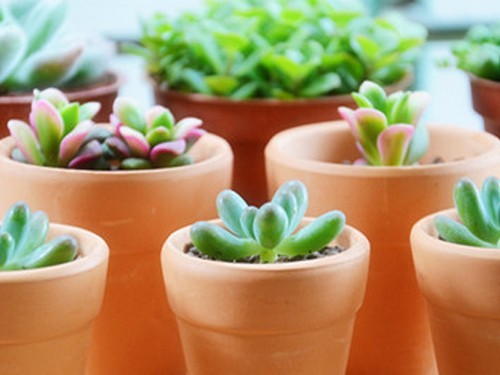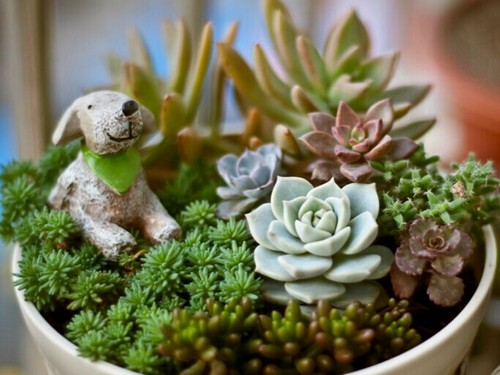How to fertilize succulent plants the method of cutting propagation of succulent plants
Many friends asked, how to fertilize succulent plants? How to match the soil when changing the basin. In fact, succulent plants themselves do not need much fertilizer. So if you want to fertilize, what should be done? the following summary hopes to be useful to you:
1. Potash fertilizer is very important, and most of the compound fertilizers sold in the market are not suitable for sampling fairy meat. Phosphate fertilizer is the second most important, especially when it blossoms and bears fruit. It is sometimes hard to tell what the specific ingredients of compound granular fertilizer are. Or the traditional fertilizer is more reliable.
2. Potassium chloride can be used temporarily, mainly due to the residual chloride ion in the soil. Similarly, potassium sulfate should not be used too much.
3. Chemical fertilizers that can be mixed: potassium nitrate, potassium dihydrogen phosphate, plant ash, potassium chloride, etc., in which potassium nitrate and potassium chloride are neutral.

4. Acidic pesticides and fertilizers all have a sentence: it is forbidden to mix with alkaline pesticides and fertilizers. Acidic fertilizer refers to the acidic salt soluble in water, mainly refers to ammonium nitrate, ammonium sulfate, ammonium chloride and other strong acid ammonium salt and potassium dihydrogen phosphate, calcium superphosphate (the main component of calcium dihydrogen phosphate) and other acid salts. Can not be mixed with alkaline pesticides and fertilizers because: ammonium salt in the presence of alkali will be decomposed into ammonia, calcium superphosphate will produce calcium phosphate which is insoluble in water. Potassium dihydrogen phosphate should not be included, because potassium dihydrogen phosphate neutralization products potassium hydrogen phosphate and potassium phosphate are soluble in water.
Conclusion: potassium dihydrogen phosphate should be mixed with plant ash.
5. Calcium is very important for some cacti, especially flower cages native to limestone soil. Gypsum can be used, and gypsum is better to use raw ore. If not, let's take calcium superphosphate. Note that alkaline plant ash and other substances should not be mixed at this time, for reasons see 4. I think it's also good to use peeled eggshells, as long as the soil is acidic.
6. With regard to nitrogen, spherical cacti generally do not need urea, the fertility is too large and difficult to master, and the nitrogen in potassium nitrate is enough. We must pay attention to this. Too much nitrogen fertilizer will make the ball burst. Including fish and pockets, as soon as a handful of urea goes down, the ball will crack in a few days. The lasting effect of ammonium nitrogen fertilizer in the soil is better than that of nitrate nitrogen fertilizer, and nitrate can easily flow away from under the flowerpot with water. The ammonium salt is more persistent because it is a cation that binds to soil particles. If the soil is slightly acidic, a little ammonium dihydrogen phosphate, or a grain of urea, will work more persistently. Notice that it's a little urea.
Summary:
Formula 1: potassium dihydrogen phosphate + potassium nitrate as topdressing, the concentration is very low. Gypsum or calcium superphosphate or eggshell is mixed into the soil. Then everything will be all right.
- Prev

How to trim the root of succulent plants the methods and techniques of topdressing succulent plants
It is not common for succulent plants to lack fertilizer, but it is common for succulent plants to burn roots. As mentioned earlier, the root osmotic pressure of succulent plants is mainly aimed at excessive fertilization, and the result of excessive fertilization is often easy to cause rot at a time. But in order to make more
- Next

How to fertilize succulents How to raise succulents
A lot of friends ask, how to fertilize succulent plants? How to mix soil when changing pots. Succulent plants themselves don't need much fertilizer. So if you want to fertilize, what should you do? The following summary is useful to everyone: 1. Potassium fertilizer is very important.
Related
- Wuhan Hospital Iron Tree Blooming Result Was Instantly Frightened by the Gardener Master
- Which variety of camellia is the most fragrant and best? Which one do you like best?
- What is the small blue coat, the breeding methods and matters needing attention of the succulent plant
- Dormancy time and maintenance management of succulent plants during dormancy
- Minas succulent how to raise, Minas succulent plant pictures
- What are the varieties of winter succulent plants
- How to raise succulent plants in twelve rolls? let's take a look at some experience of breeding twelve rolls.
- Attention should be paid to water control for succulent plants during dormant period (winter and summer)
- Watering experience of twelve rolls of succulent plants
- Techniques for fertilizing succulent plants. An article will let you know how to fertilize succulent plants.

